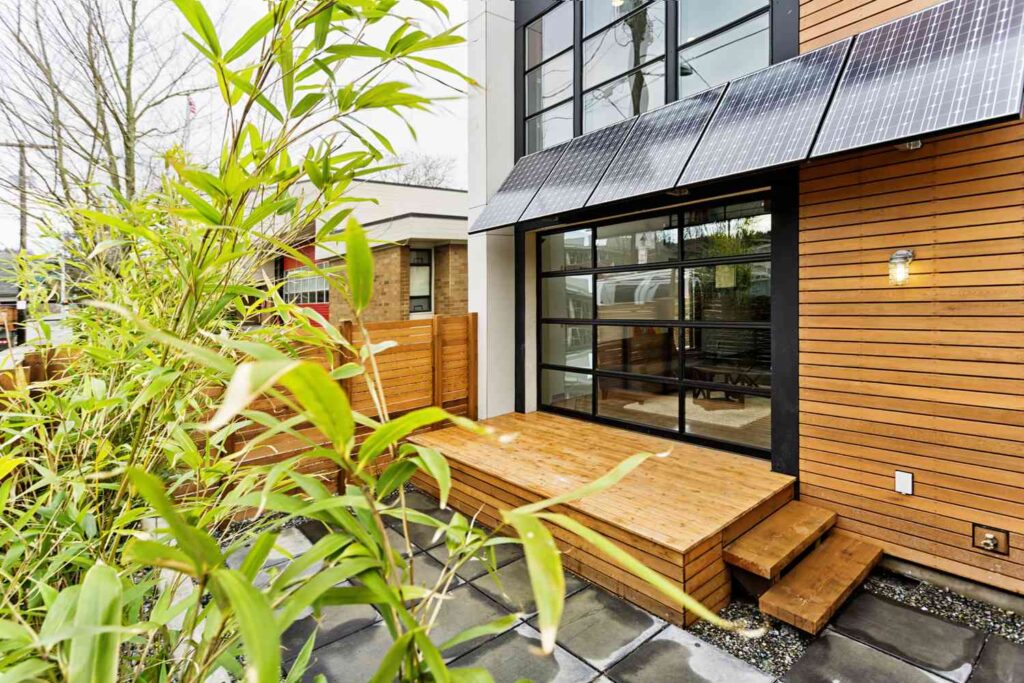
These days, more and more people are embracing sustainable living solutions. This is apparent in their decision to live in sustainable homes. This trend results from increasing environmental concerns and the tendency of people to lead environment-friendly lifestyles. It’s important to understand the main aspects of such a trend, so you can make informed decisions when it comes to choosing the kind of home you want to live in. Broomfield Co real estate experts North Metro Realty can provide you with the necessary information you need and guide you in making your choices.
Environment-Friendly Building Materials
Sustainable homes are made of eco-friendly materials like reclaimed wood, recycled metal, and bamboo. Such materials are meant to reduce environmental impact and can offer exceptional appeal and durability. Going for sustainable wood products allows you to contribute to minimizing deforestation and reducing greenhouse gas emissions. Also, such materials can provide appealing design elements, which make your house stylish and eco-conscious.

- Reclaimed wood. This material is obtained from old barns, warehouses, and factories. It provides a unique look that gives your home more history and character.
- Bamboo. As bamboo tends to grow faster than conventional wood, it is highly renewable. It is known for its flexibility and strength, which make it a great choice for cabinetry and flooring.
- Recycled metal. This material is used for structural components and finishes, minimizing the need to produce new metal. Also, recycled metal can be molded into different forms, offering versatile design options without sacrificing sustainability and strength.
Energy Efficiency
Features such as high-efficiency windows, Energy Star-rated appliances, and improved insulation help minimize energy consumption, which lowers your energy bills and environmental footprint. High-efficiency windows are made with several panes, gas fills, and low-emissivity coatings to minimize heat transfer. With this, your home remains warmer in the colder months and cooler in summer.
Meanwhile, modern insulation materials like rigid foam or spray foam provide better thermal resistance than conventional fiberglass. By improving your home’s insulation, you can maintain a consistent temperature indoors, improving further and lowering your energy costs. Finally, solar panels are made to convert sunlight into electricity, offering a clean and renewable source. When solar systems generate enough energy that a home needs, homeowners do not consume energy from another source.
In addition, using energy sources like wind turbines and solar panels can further improve the sustainability of your house. Such technologies reduce dependence on fossil fuels and offer financial benefits through possible energy savings and tax incentives.
Healthy Indoor Environments
A sustainable house prioritizes healthy indoor environments. The use of non-toxic paints, adhesives, and finishes can enhance indoor air quality, minimizing health risks related to toxic chemicals. Air purifiers and ventilation systems further guarantee clean indoor air.
Additionally, incorporating natural sunlight by placing windows and skylights strategically can improve your health and decrease the need to buy artificial sunlight.
Water Conservation
Maintaining a sustainable house involves conserving water. Implementing water-saving fixtures like low-flow faucets, toilets, and showerheads can minimize water consumption without compromising performance. In addition, greywater recycling and rainwater harvesting systems let you reuse water for non-potable purposes like irritation. Such practices help preserve water resources, minimize strain on your municipal water systems, and cut down your energy bills. Let’s learn more about your water conversation options:
- Low-flow fixtures. Advanced technology has allowed plumbing fixtures to produce a controlled amount of water. Such fixtures can lower your water usage and water bills.
- Rainwater harvesting. This involves collecting and storing rainwater from the roof that can be used later for in toilet flushing, irritation, and laundry. This minimizes your dependence on municipal water supplies. Also, this helps manage stormwater runoff.
- Greywater recycling. This involves treating wastewater from showers, sinks, and washing machines and reusing the treated water in irrigation and landscaping.
